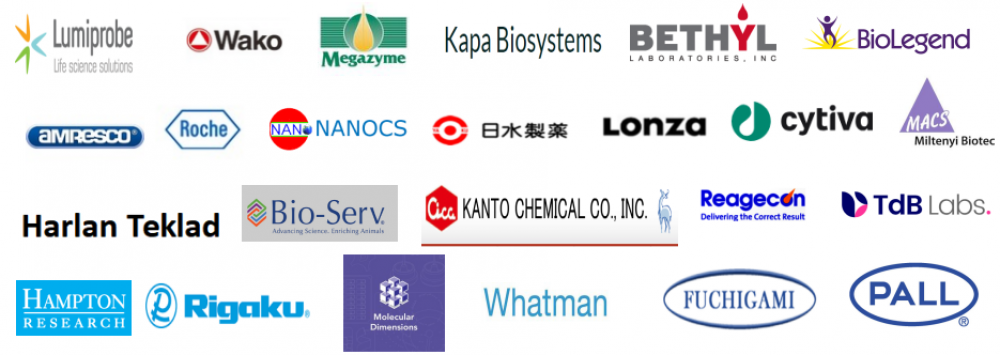PEG/pH • PEG/pH 2 • PEG/pH HT蛋白结晶-Hampton
上海金畔生物代理Hampton research品牌蛋白结晶试剂耗材工具等,我们将竭诚为您服务,欢迎访问Hampton research官网或者咨询我们获取更多相关Hampton research品牌产品信息。


Products > Crystallization Screens > PEG/pH • PEG/pH 2 > PEG/pH • PEG/pH 2 • PEG/pH HT
PEG/pH • PEG/pH 2 • PEG/pH HT
Applications
- Crystallization screen where Polyethylene glycol 4,000 and buffers sample an acidic to neutral, and/or neutral to alkaline pH
Features
- Developed at Hampton Research
- PEG/pH samples pH 3.5 – 7.4 in 0.2 M buffer
- PEG/pH 2 samples pH 6.4 – 9.6 in 0.2 M buffer
- PEG/pH HT samples pH 3.5 – 9.6 in 0.2 M buffer
- Polyethylene glycol 4,000 – primary reagent
- PEG/pH & PEG/pH 2 each utilize 10 unique buffers, 0.2 M – secondary reagent
- PEG/pH HT 20 unique buffers, 0.2 M – secondary reagent
- Compatible with vapor diffusion, microbatch, free interface diffusion
Description
pH is an effective solubility, stability and crystallization variable because most proteins demonstrate pH dependent solubility minima and will solubilize, precipitate, or crystallize at particular pH values or in the presence of specific buffers. The solubility minima may correspond with the isoelectric point (pI) of the protein, but this is not always the case. The solubility minima and maxima is often complex and may depend on other chemical and physical variables in the crystallization experiment.
Using PEG/pH, PEG/pH 2, or PEG/pH HT one isolates pH, buffer type and relative supersaturation from other chemical and physical variables to screen the effect that pH and buffer type have on the solubility, stability, homogeneity, monodispersity and crystallization of the sample. Varying the pH can alter the protonation state and charge of amino acid residues in the protein, generating different species of the protein for solubility and crystallization screening. The change in pH can have a dramatic effect on inter and intramolecular contacts in the protein and can manipulate how the protein interacts with itself, the surrounding solvent and chemicals in the drop. By screening buffer type and pH in a low ionic strength environment of Polyethylene glycol, PEG/pH simultaneously delivers as a solubility and a crystallization screen for proteins.
Designed as a 96 reagent screen, but offered as two sets of 48 x 10 ml reagents or a single 96 x 1 ml reagent block, PEG/pH, PEG/pH 2, and PEG/pH HT samples Polyethylene glycol 4,000 versus 20 different buffers, at 0.2 M, while sampling pH 3.5 – 9.6.
PEG/pH 1 samples 20% w/v Polyethylene glycol 4,000 versus pH 3.5 – 7.4 in 0.2 M buffer. PEG/pH is supplied in a 48 x 10 ml tube format. PEG/pH is compatible with vapor diffusion, free interface diffusion, and microbatch crystallization methods. For research use only.
PEG/pH 2 samples 20% w/v Polyethylene glycol 4,000 versus pH 6.4 – 9.6 in 0.2 M buffer. PEG/pH 2 is supplied in a 48 x 10 ml tube format. PEG/pH 2 is compatible with vapor diffusion, free interface diffusion, and microbatch crystallization methods. For research use only.
PEG/pH HT samples 20% w/v Polyethylene glycol 4,000 versus pH 3.5 – 9.6 in 0.2 M buffer. PEG/pH HT is supplied in a 96 x 1 ml block format. PEG/pH HT is compatible with vapor diffusion, free interface diffusion, and microbatch crystallization methods. For research use only.
结晶筛选,其中聚乙二醇 4,000 和缓冲液采样酸性至中性和/或中性至碱性 pH 值
特征
在汉普顿研究中心开发
PEG/pH 样品 pH 3.5 – 7.4 在 0.2 M 缓冲液中
PEG/pH 2 样品 pH 6.4 – 9.6 在 0.2 M 缓冲液中
PEG/pH HT 样品 pH 3.5 – 9.6 在 0.2 M 缓冲液中
聚乙二醇 4,000 – 主要试剂
PEG/pH 和 PEG/pH 2 各使用 10 种独特的缓冲液,0.2 M – 二级试剂
PEG/pH HT 20 独特的缓冲液,0.2 M – 二级试剂
兼容蒸汽扩散、微批次、自由界面扩散
描述
pH 是一个有效的溶解度、稳定性和结晶变量,因为大多数蛋白质表现出 pH 依赖性溶解度最小值,并且会在特定 pH 值或特定缓冲液存在下溶解、沉淀或结晶。溶解度最小值可能与蛋白质的等电点 (pI) 相对应,但情况并非总是如此。溶解度最小值和最大值通常很复杂,可能取决于结晶实验中的其他化学和物理变量。使用 PEG/pH、PEG/pH 2 或 PEG/pH HT 可以将 pH、缓冲液类型和相对过饱和度与其他化学和物理变量分离,以筛选 pH 和缓冲液类型对溶解度、稳定性、均匀性、单分散性和样品结晶。改变 pH 值可以改变蛋白质中氨基酸残基的质子化状态和电荷,产生不同种类的蛋白质用于溶解度和结晶筛选。 pH 值的变化会对蛋白质的分子间和分子内接触产生巨大影响,并且可以控制蛋白质如何与自身、周围溶剂和液滴中的化学物质相互作用。通过在聚乙二醇的低离子强度环境中筛选缓冲液类型和 pH 值,PEG/pH 值同时作为蛋白质的溶解度和结晶筛选提供。
设计为 96 试剂屏幕,但提供两组 48 x 10 ml 试剂或单个 96 x 1 ml 试剂块、PEG/pH、PEG/pH 2 和 PEG/pH HT 样品 聚乙二醇 4,000 与 20 种不同的缓冲液,在 0.2 M,同时采样 pH 值 3.5 – 9.6。
PEG/pH 1 样品在 0.2 M 缓冲液中 20% w/v 聚乙二醇 4,000 与 pH 3.5 – 7.4。 PEG/pH 以 48 x 10 ml 试管形式提供。 PEG/pH 与蒸汽扩散、自由界面扩散和微批次结晶方法兼容。仅供研究使用。
PEG/pH 2 样品 20% w/v 聚乙二醇 4,000 对比 pH 6.4 – 9.6,在 0.2 M 缓冲液中。 PEG/pH 2 以 48 x 10 ml 试管形式提供。 PEG/pH 2 与蒸汽扩散、自由界面扩散和微批次结晶方法兼容。仅供研究使用。
PEG/pH HT 样品 20% w/v 聚乙二醇 4,000 对比 pH 3.5 – 9.6 在 0.2 M 缓冲液中。 PEG/pH HT 以 96 x 1 ml 块状形式提供。 PEG/pH HT 与蒸汽扩散、自由界面扩散和微批次结晶方法兼容。仅供研究使用。
PEG/pH
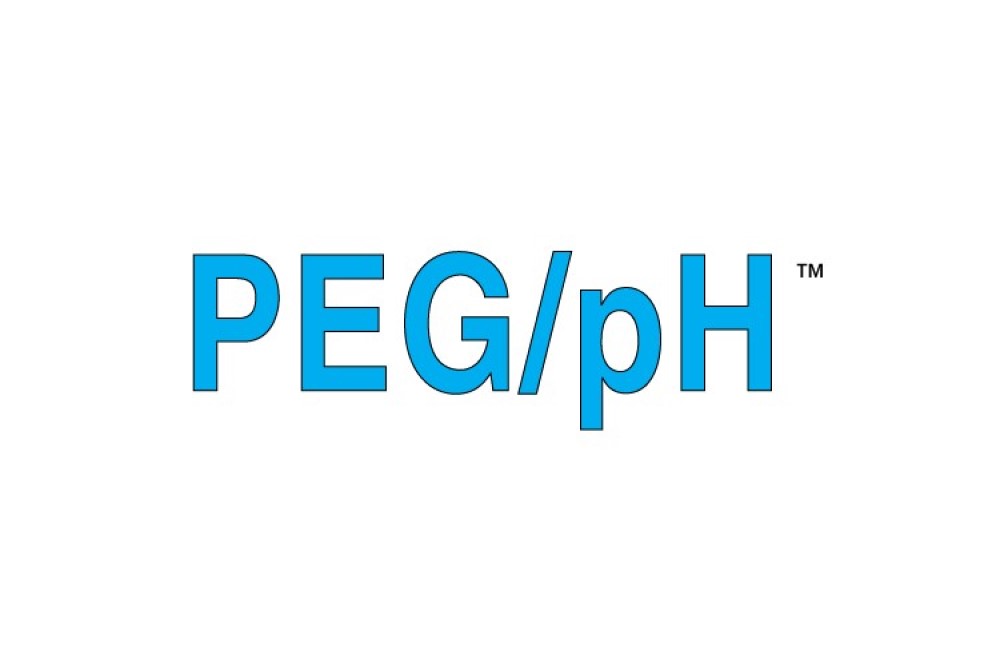
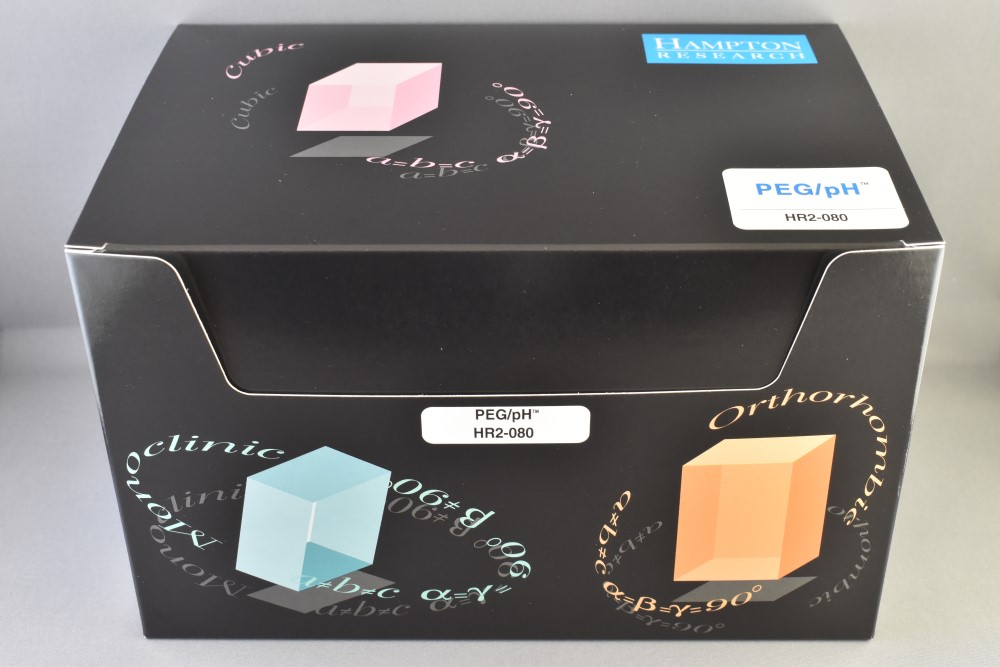
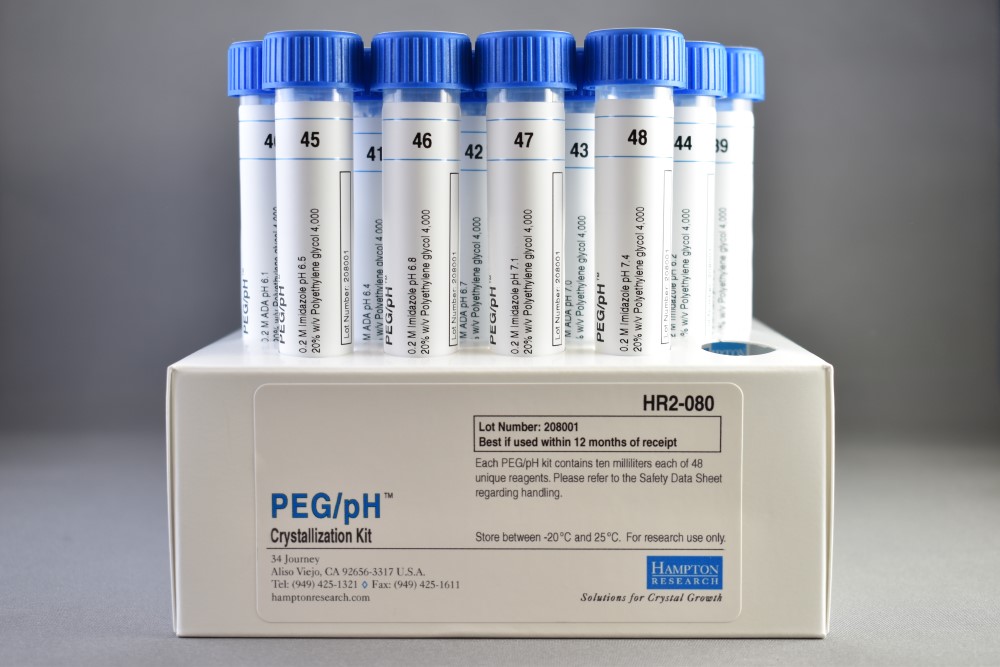
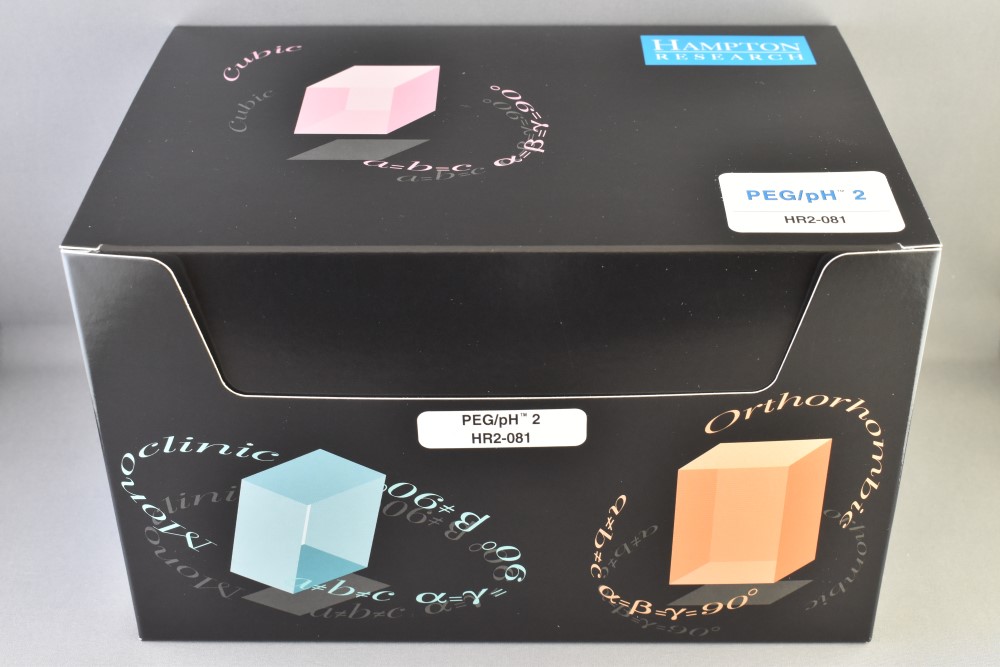
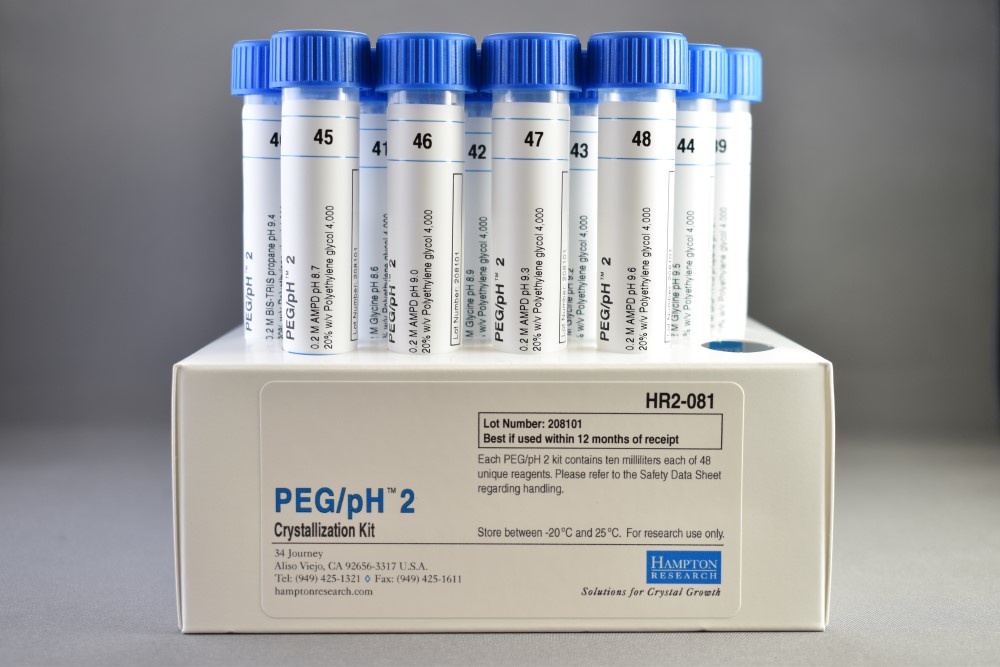
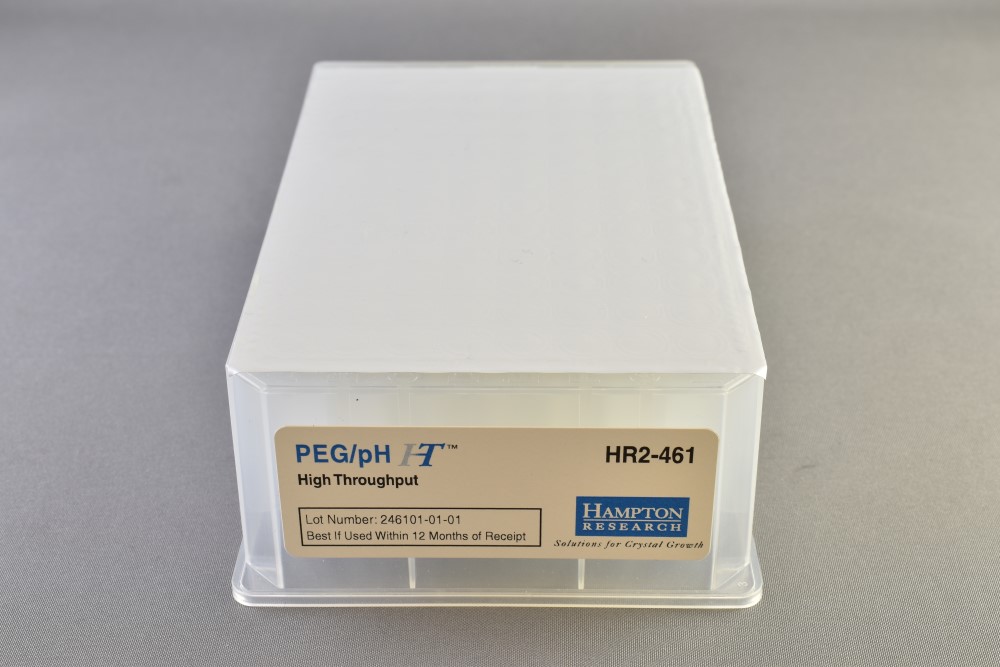
CAT NO
HR2-080
NAME
DESCRIPTION
10 ml, tube format
PRICE
$253.00
cart quote
CAT NO
HR2-081
NAME
DESCRIPTION
10 ml, tube format
PRICE
$253.00
cart quote
CAT NO
HR2-461
NAME
DESCRIPTION
1 ml, Deep Well block format
PRICE
$147.00
cart quote
Support Material(s)
 HR2-080 PEG/pH 1 Documents
HR2-080 PEG/pH 1 Documents HR2-080 PEG/pH 1 SDS
HR2-080 PEG/pH 1 SDS HR2-081 PEG/pH 2 Documents
HR2-081 PEG/pH 2 Documents HR2-081 PEG/pH 2 SDS
HR2-081 PEG/pH 2 SDS HR2-461 PEG/pH HT Documents
HR2-461 PEG/pH HT Documents HR2-461 PEG/pH HT SDS
HR2-461 PEG/pH HT SDS PEG/pH Formulation & Scoring Data
PEG/pH Formulation & Scoring DataReferences
1. Introduction to protein crystallization. Alexander McPherson and Jose A. Gavira. Acta Crystallographica Section F Volume 70, Issue 1, pages 2–20, January 2014.
2. Optimization of crystallization conditions for biological macromolecules. Alexander McPherson and Bob Cudney. Acta Crystallographica Section F Volume 70, Issue 11, pages 1445–1467, November 2014.
3. Protein Isoelectric Point as a Predictor for Increased Crystallization screening efficiency. Katherine A. Kantardjieff and Bernhard Rupp. Bioinformatics (2004) 20.
4. A protein crystallization strategy using automated grid searches on successively finer grid screens. Patricia C. Weber. Methods: A Companion to Methods in Enzymology. Vol. 1, No. 1, August, pp. 31-37, 1990.
5. Two approaches to the rapid screening of crystallization conditions. Alexander McPherson. Journal of Crystal Growth 122 (1992) 161-167.
6. Optimization of buffer solutions for protein crystallization. R. A. Gosavi, T. C. Mueser and C. A. Schall. Acta Cryst. (2008). D64, 506-514.
7. Buffer Solutions The Basics. R.J. Beynon and J.S. Easterby. 1996. IRL Press.
